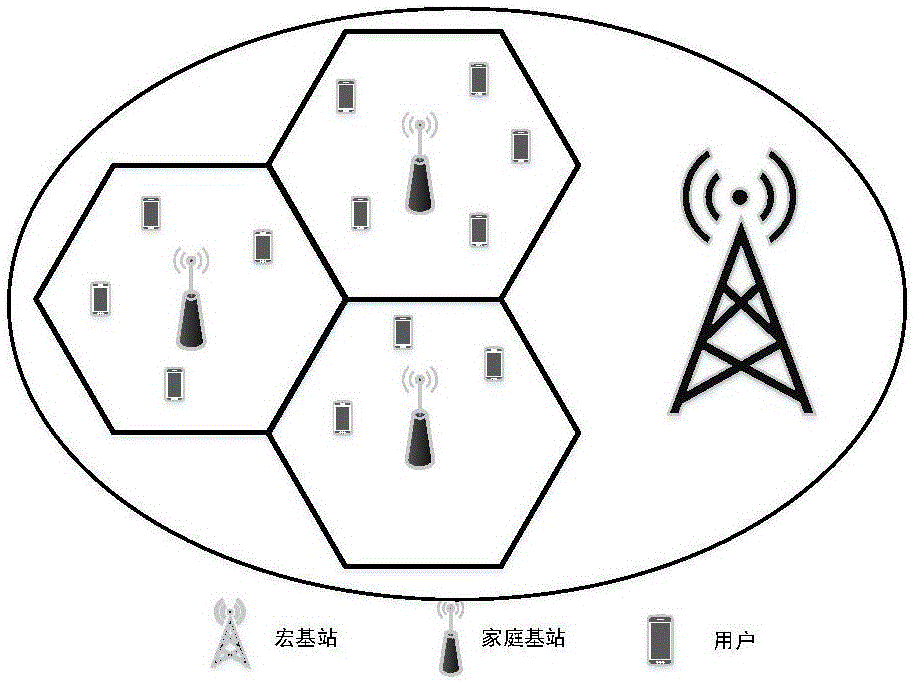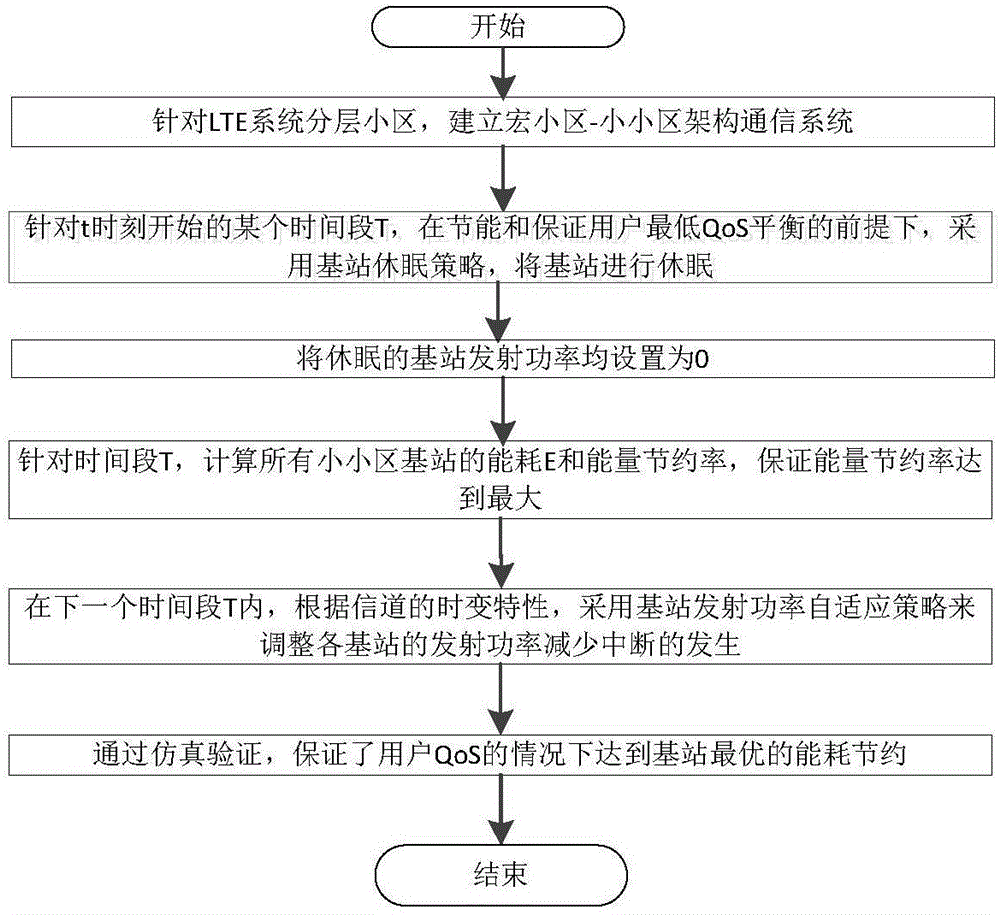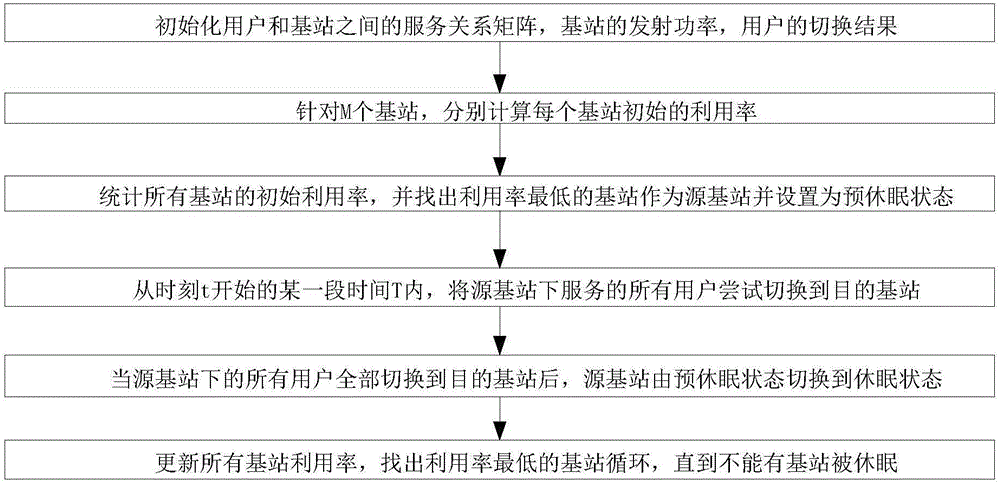Green energy-saving algorithm for use in LTE (long-term evolution) hierarchical cell architecture
A community and green technology, applied in the direction of reducing energy consumption, advanced technology, electrical components, etc., can solve problems such as poor feasibility, serious signal penetration loss, and prone to coverage blind spots
- Summary
- Abstract
- Description
- Claims
- Application Information
AI Technical Summary
Problems solved by technology
Method used
Image
Examples
Embodiment Construction
[0074] The present invention will be described in detail below in conjunction with the accompanying drawings and specific implementation methods.
[0075] The present invention summarizes the base station dormancy algorithm under the existing LTE hierarchical cell architecture, and proposes a hybrid base station dormancy algorithm on the basis of previous research results, considering the business time domain and air domain under the hierarchical cell architecture The impact of uneven distribution on the network and small-scale fading on the outage rate, and the influence of small-scale fading on the signal-to-interference-noise ratio of the received signal in the LTE hierarchical cell architecture is further considered. The time granularity can reach the minute level, which is higher in time Efficiently realize the sleep energy saving of the base station.
[0076] It is generally divided into two steps, the first step: by obtaining global information, in the first time slot, ...
PUM
 Login to View More
Login to View More Abstract
Description
Claims
Application Information
 Login to View More
Login to View More - R&D
- Intellectual Property
- Life Sciences
- Materials
- Tech Scout
- Unparalleled Data Quality
- Higher Quality Content
- 60% Fewer Hallucinations
Browse by: Latest US Patents, China's latest patents, Technical Efficacy Thesaurus, Application Domain, Technology Topic, Popular Technical Reports.
© 2025 PatSnap. All rights reserved.Legal|Privacy policy|Modern Slavery Act Transparency Statement|Sitemap|About US| Contact US: help@patsnap.com



